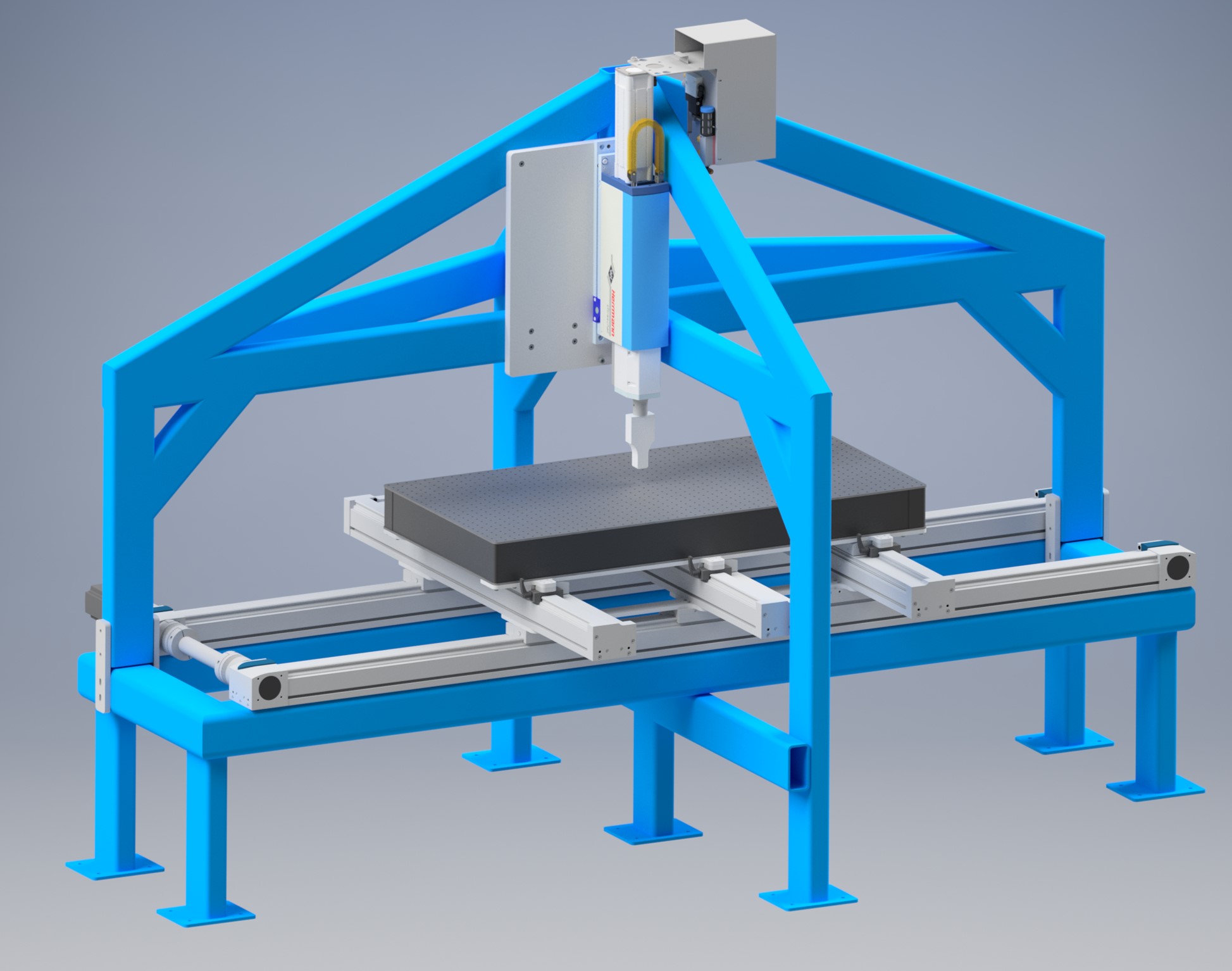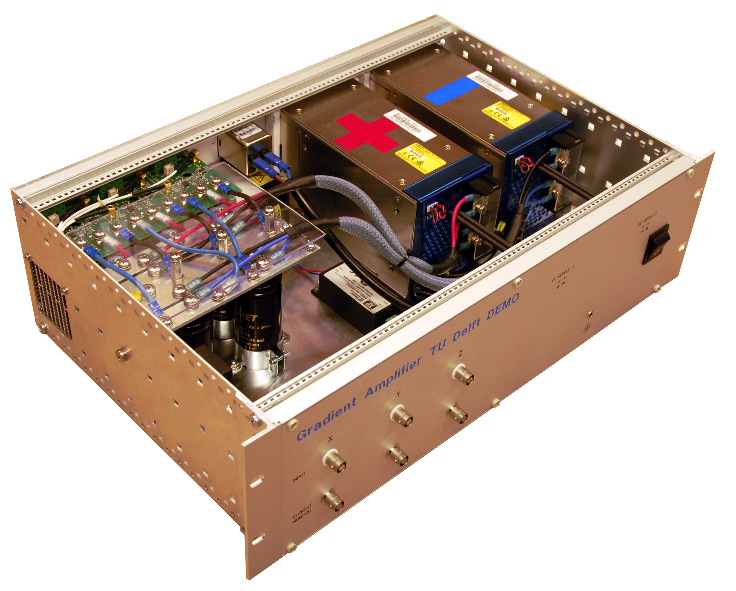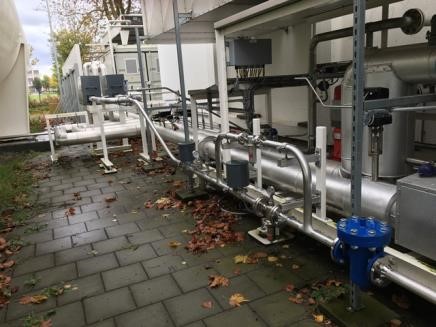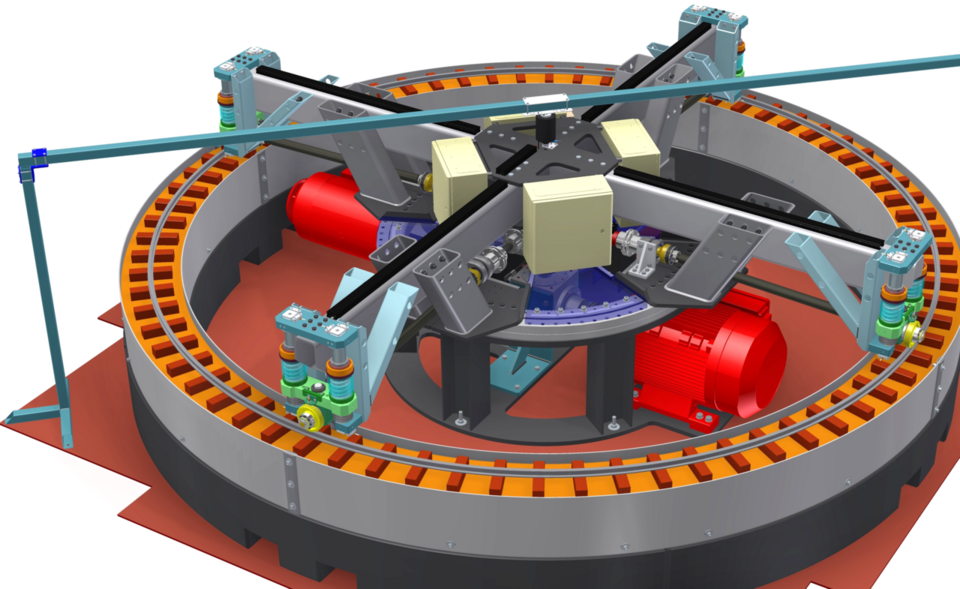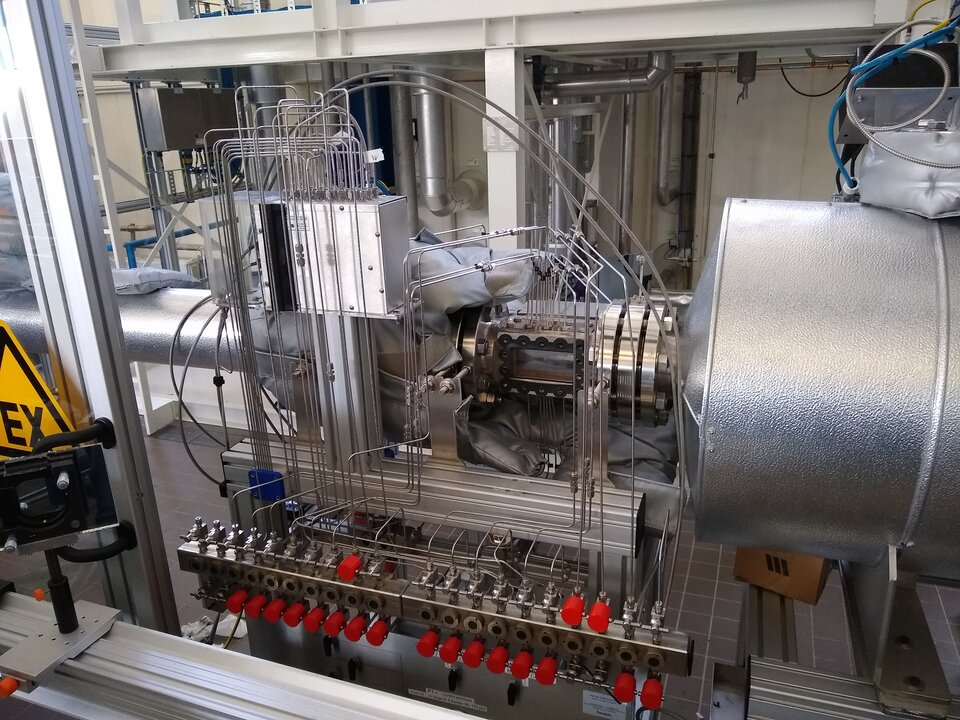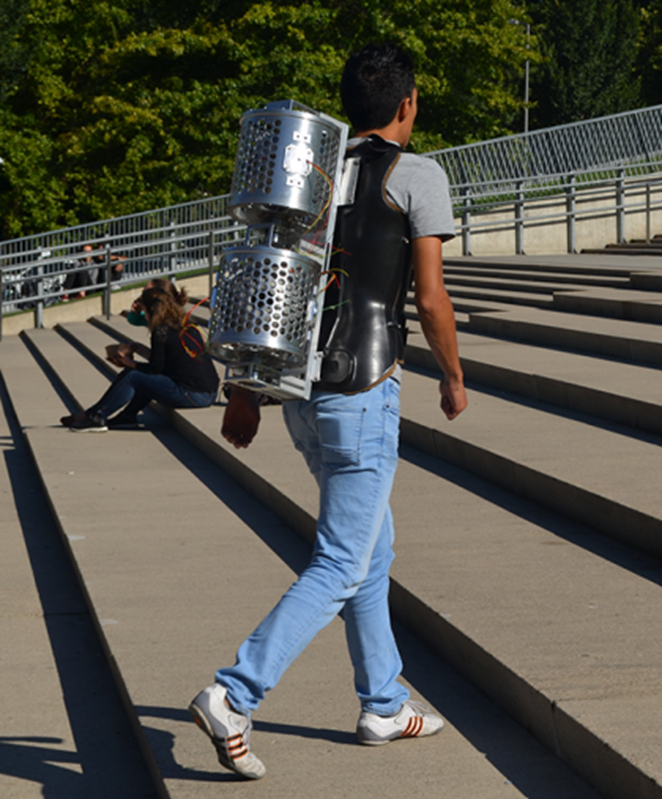In 2017, DEMO built an Ultrasonic X-Y welding table for Aerospace Engineering. AE uses this to study the continuous welding of thermoplastic composites. In subsequent years, we have added some upgrades to the set-up.
The industrial sector has used stationary ultrasonic welding for some time now. This process permanently connects two composites by vibrating a sonotrode (stainless steel press with a surface of ~2x3 cm) ultrasonically, while pressing it on the workpiece with a few hundred kg of force. This results in a temperature of several hundred degrees Celsius and melts the materials together in a very short time.
The innovative part of this study is that the workpiece can be moved under the sonotrode, creating a line weld, which enables new geometries.
The challenge was to build a table configuration that can move a metre over the X-axis with a precisely controlled speed and which does not deflect by more than 0.05 mm under a load of up to 4 kN. To achieve this, the choice was made for heavy linear guides by Festo including an electrical actuator, onto which an optical table by Thorlabs was placed. To support this assembly properly and to accommodate the ultrasonic welding machine, a reasonably heavy-duty steel frame has been built. The assembly can be seen in the photograph below.
Afterwards, there was a preference to add an extra press to the system, which, even after the welding, could provide the workpiece with pressure for a while, so that it can cool down without deforming too much. To achieve this, a ‘Servo Press’ by Festo was added to the set-up.
The researchers also wanted to be able to accurately measure the temperature of the workpiece during welding, for which additional sensors were integrated into the existing system.
The whole set-up consists of various electrical systems from different suppliers. DEMO has developed the electronics and software to bring all this together into a working system, where researchers can enter their variables directly and the welding process and horizontal movement can be controlled and read out synchronously.
This is a good example of close cooperation between our mechanical and electrical departments which has resulted in a unique solution, as well as the possibility to extend the system afterwards, if the customer has developed additional requirements during the study.


